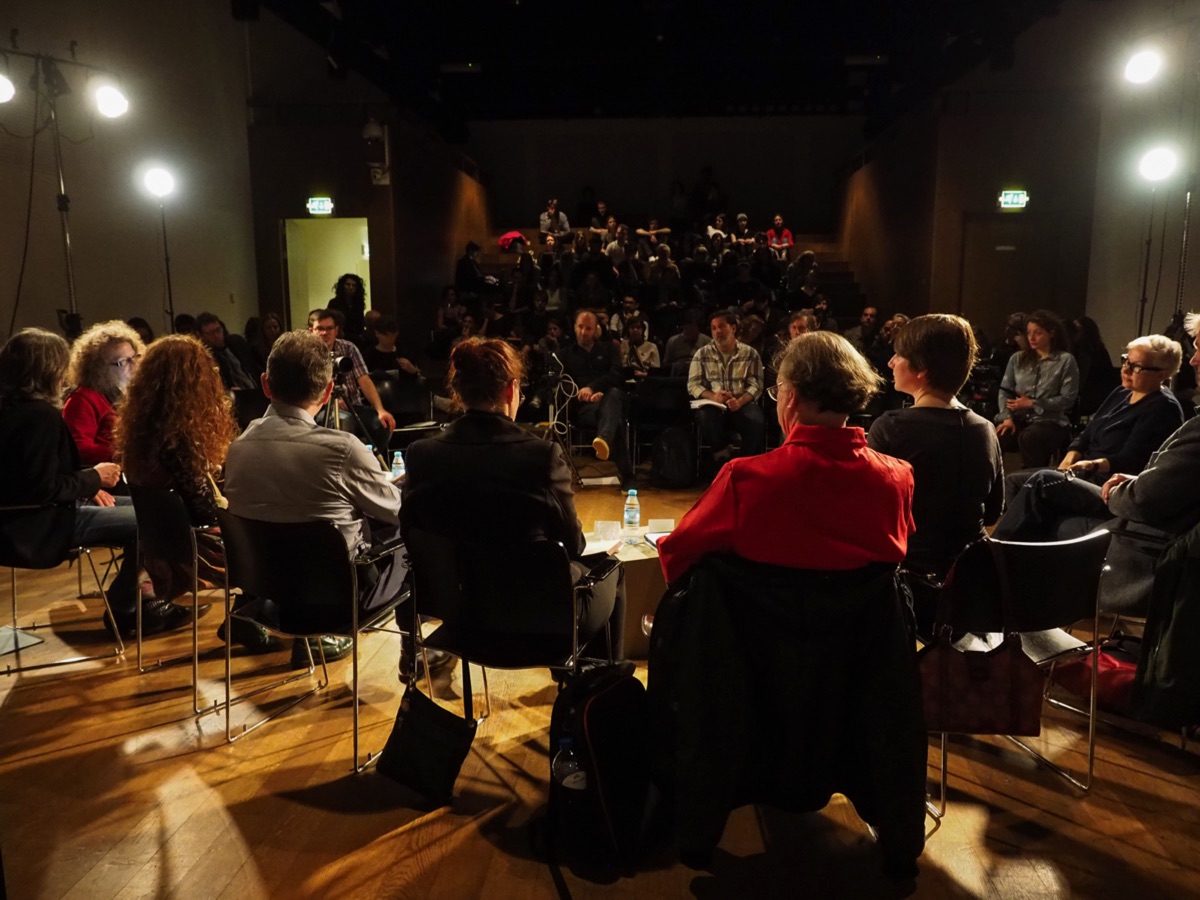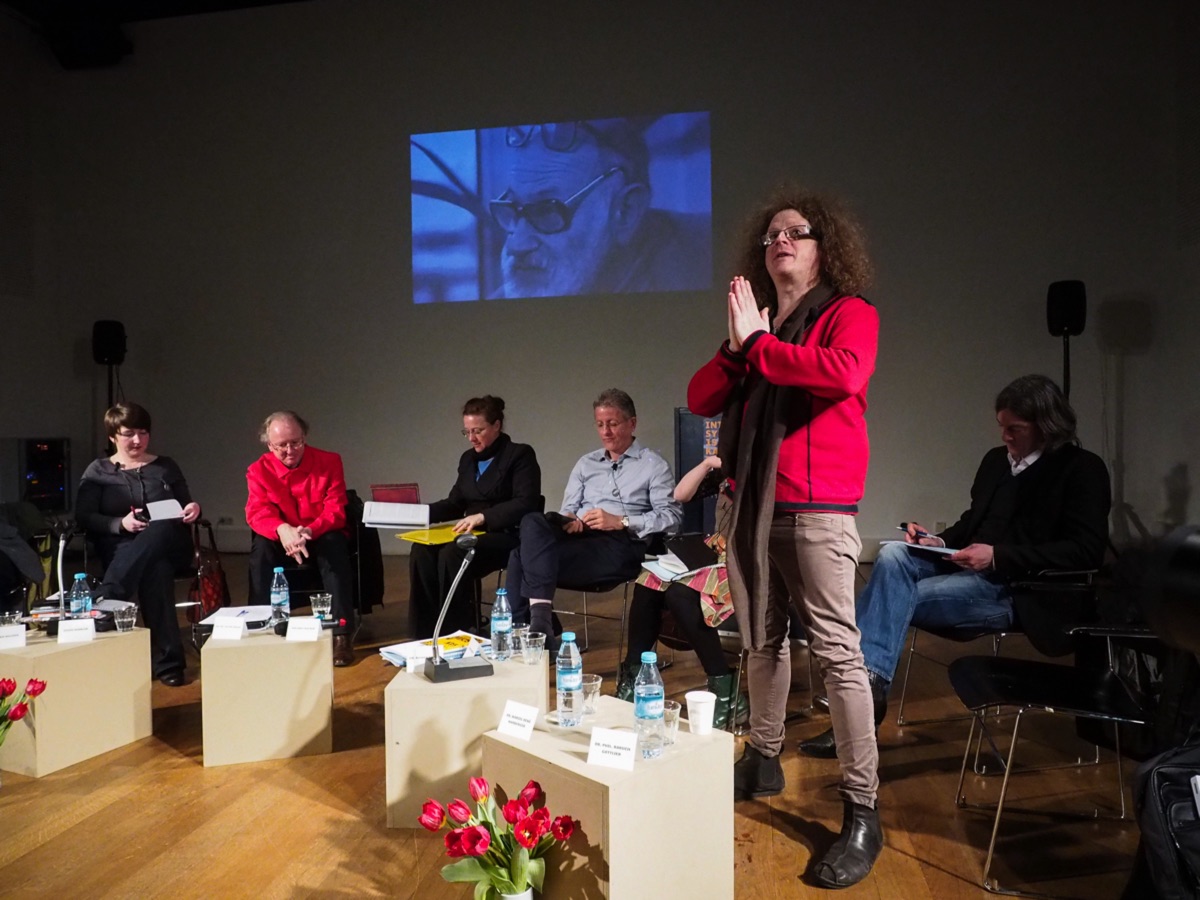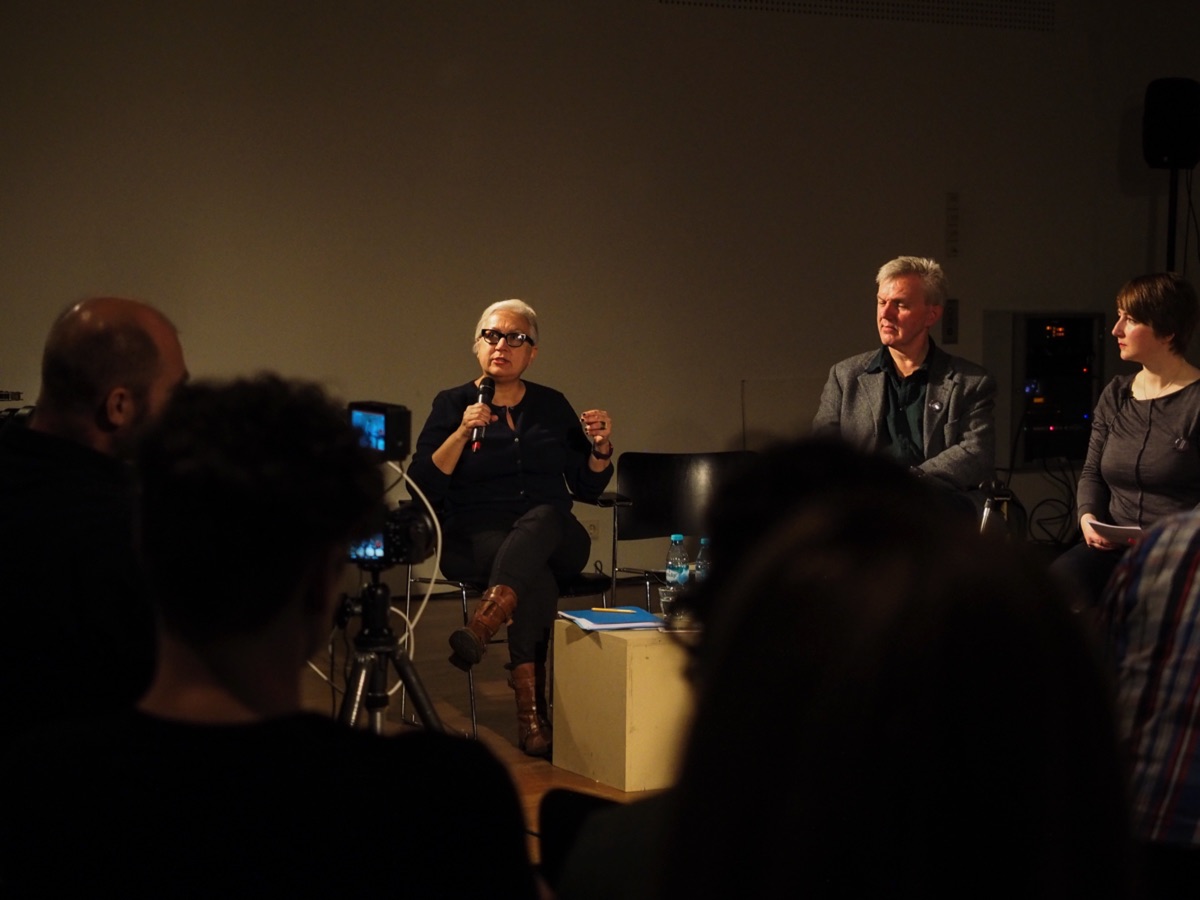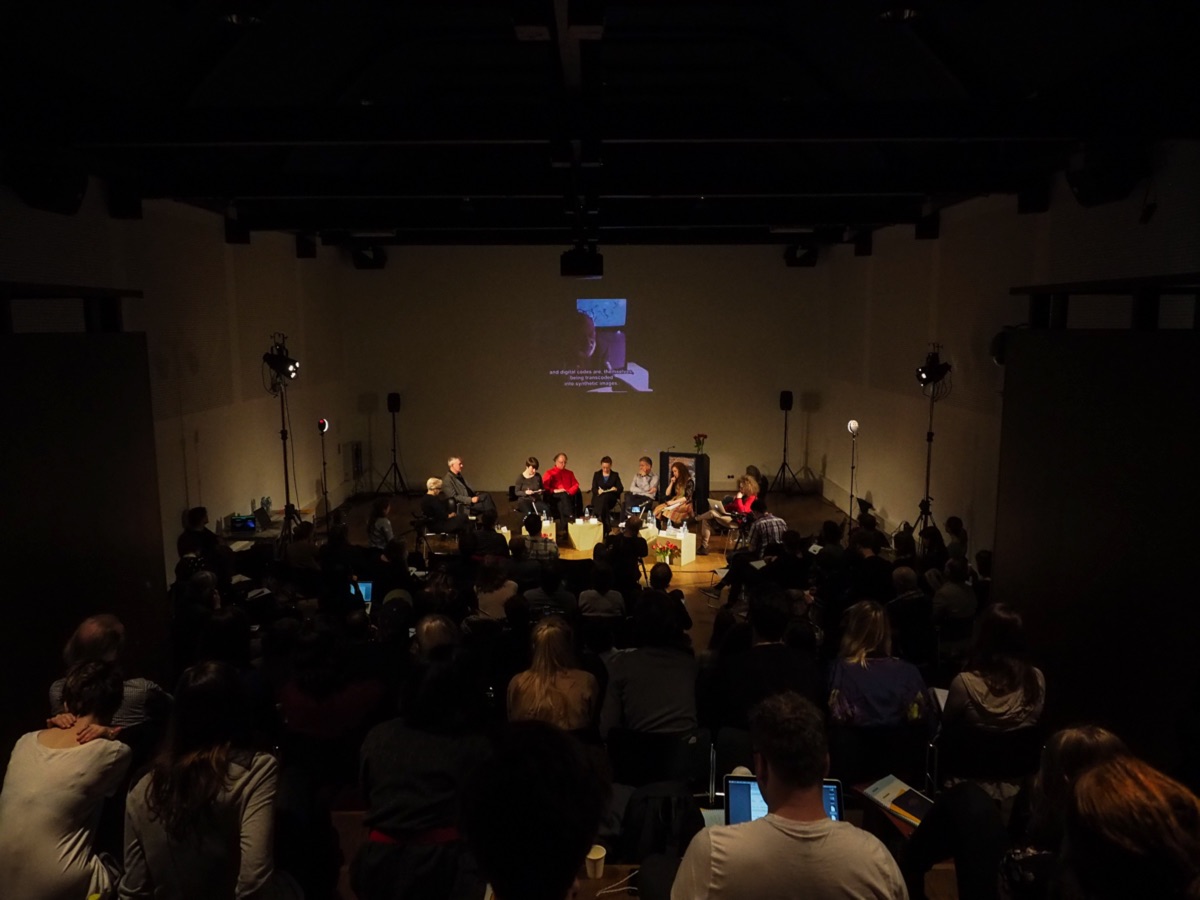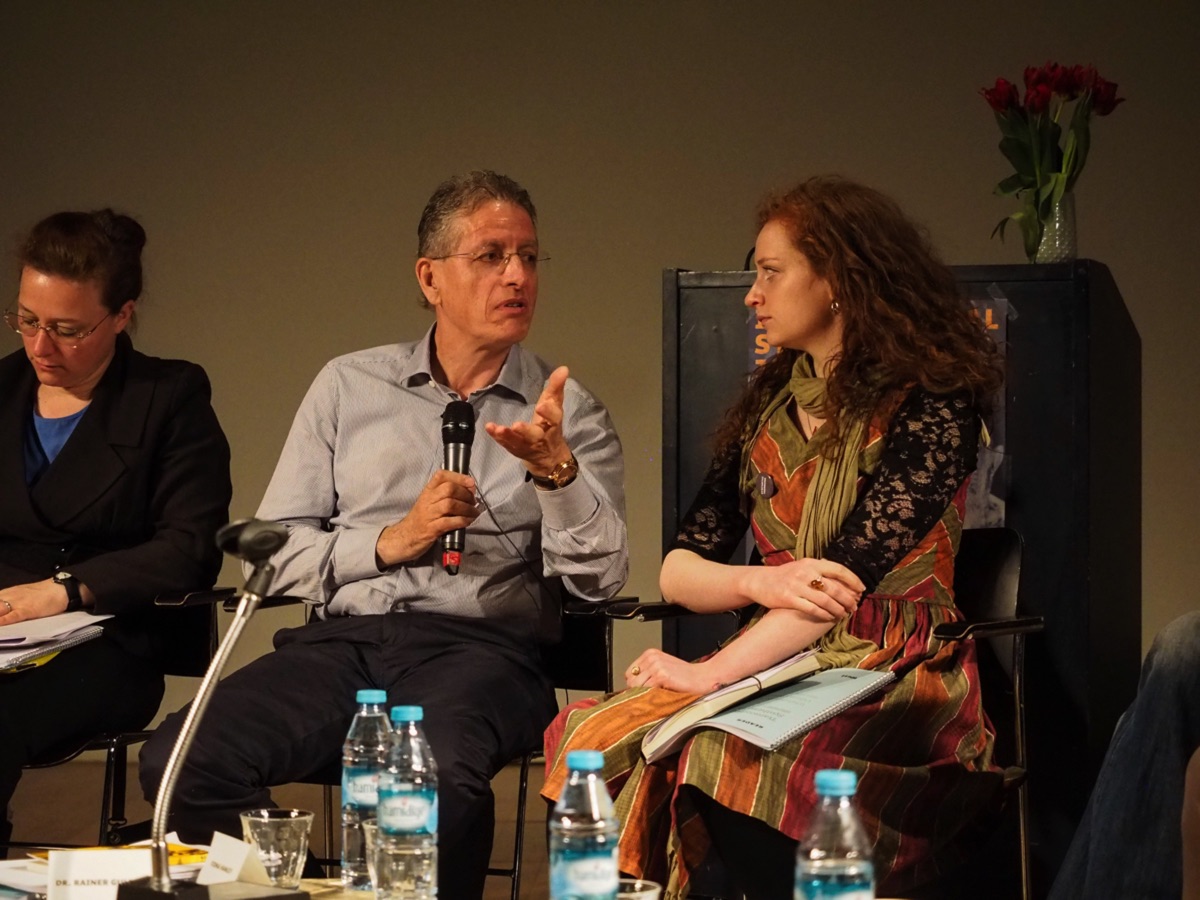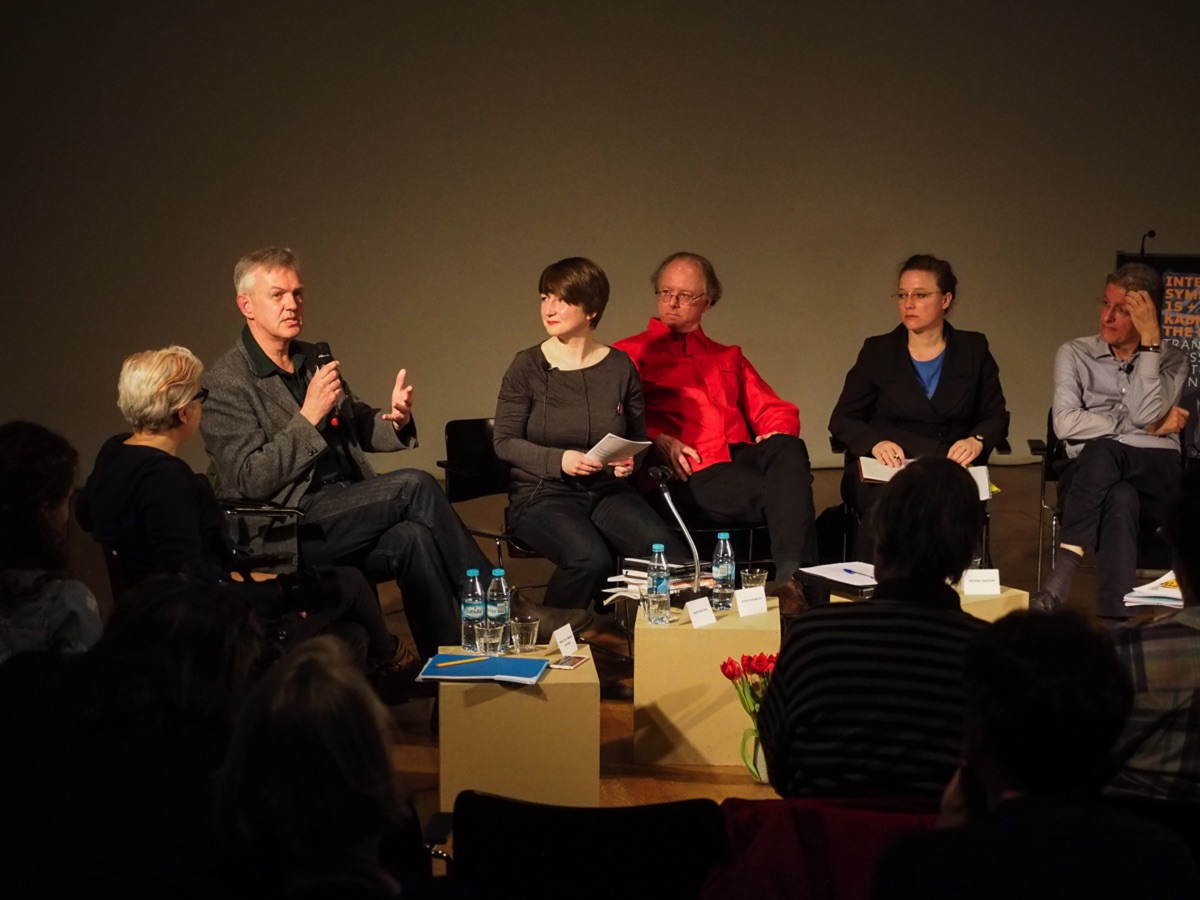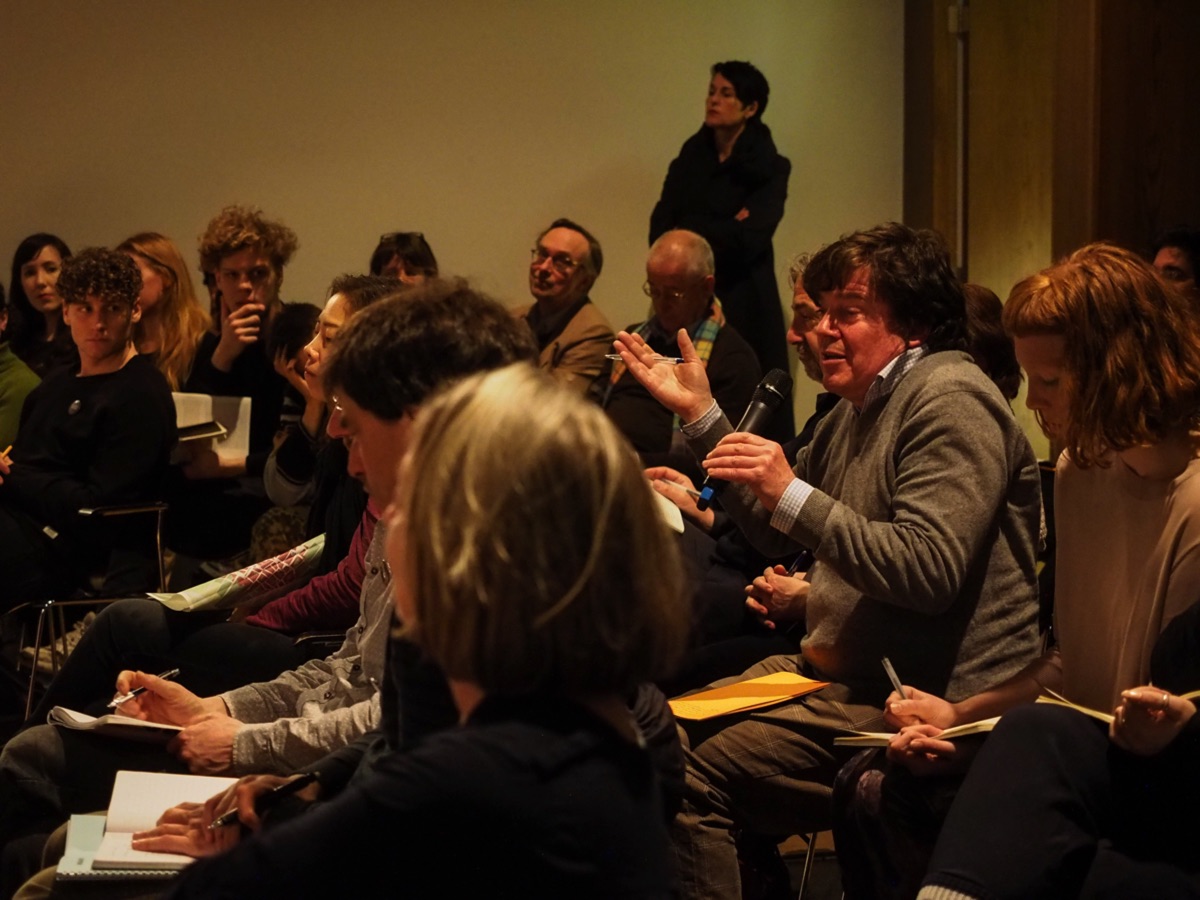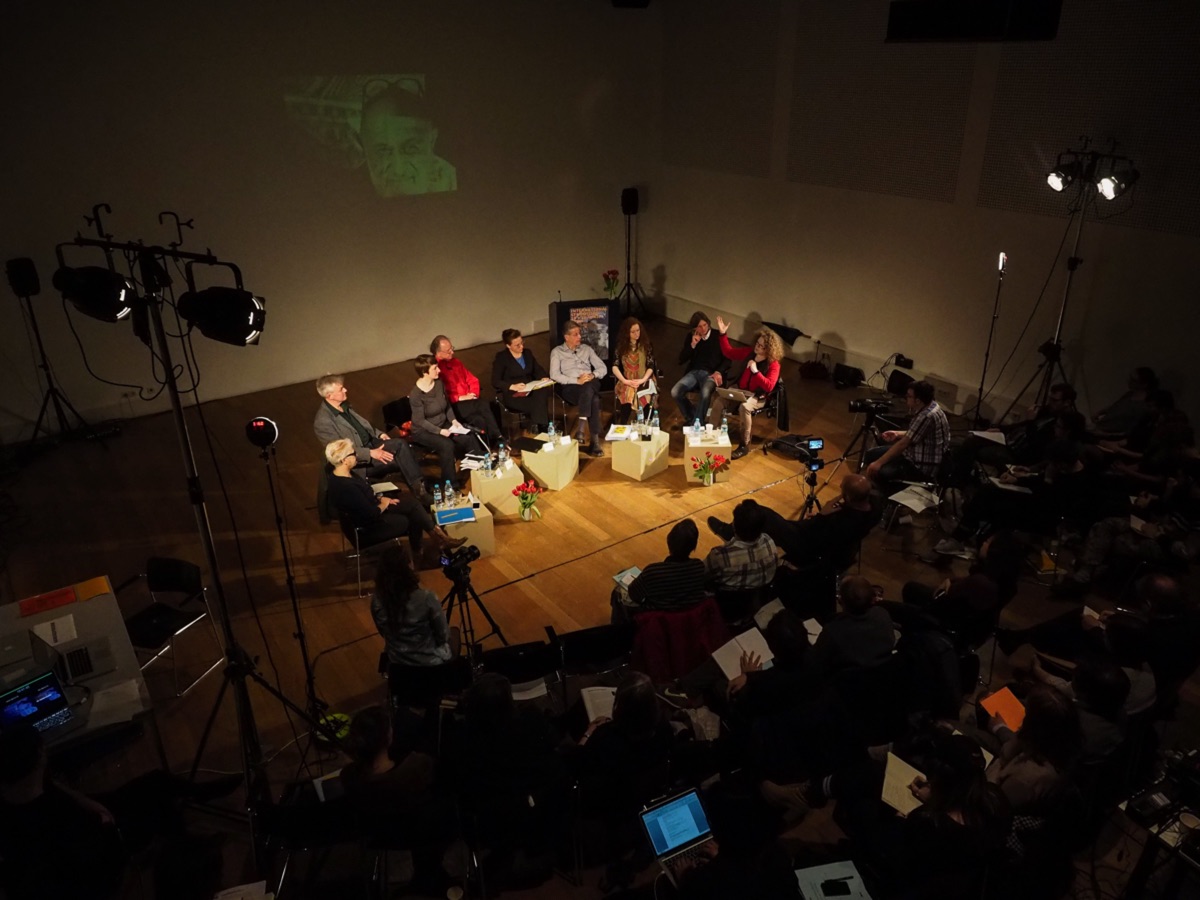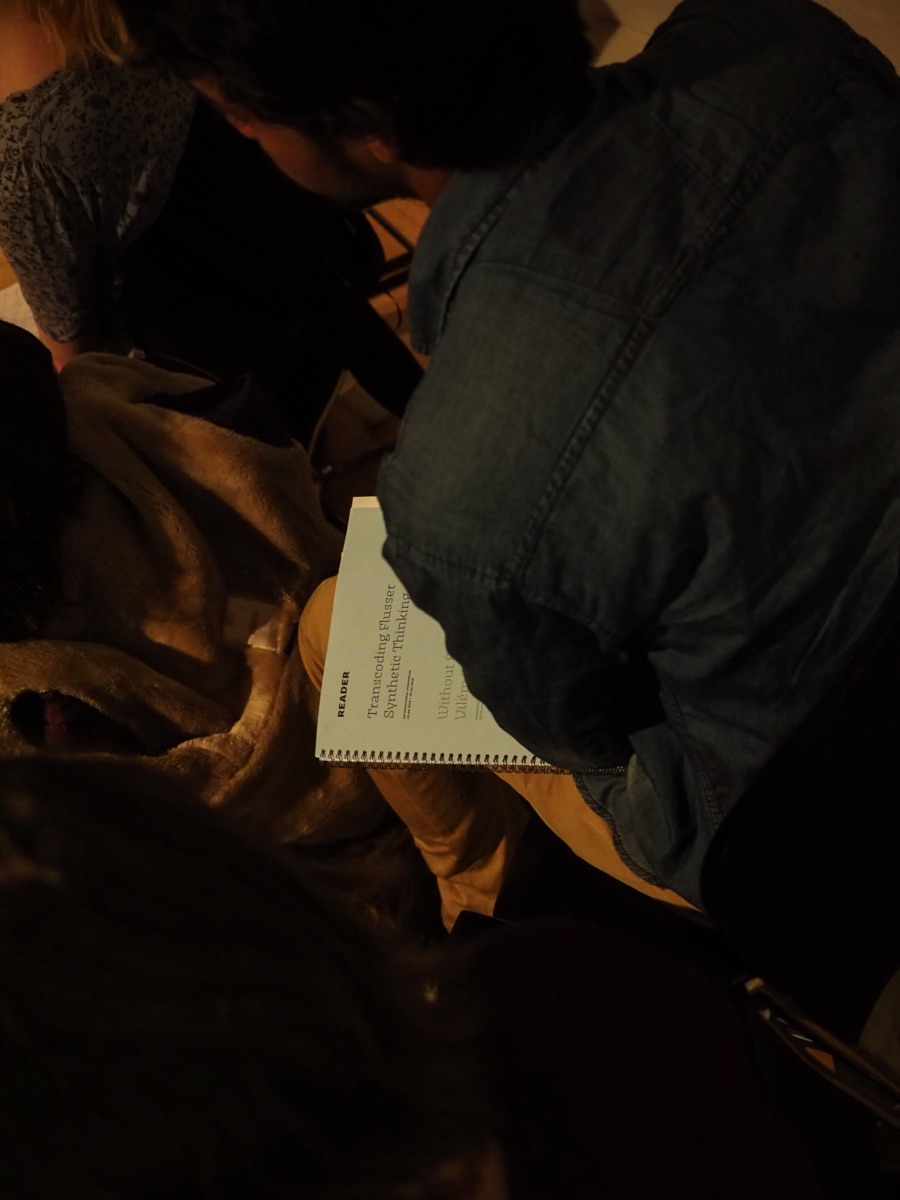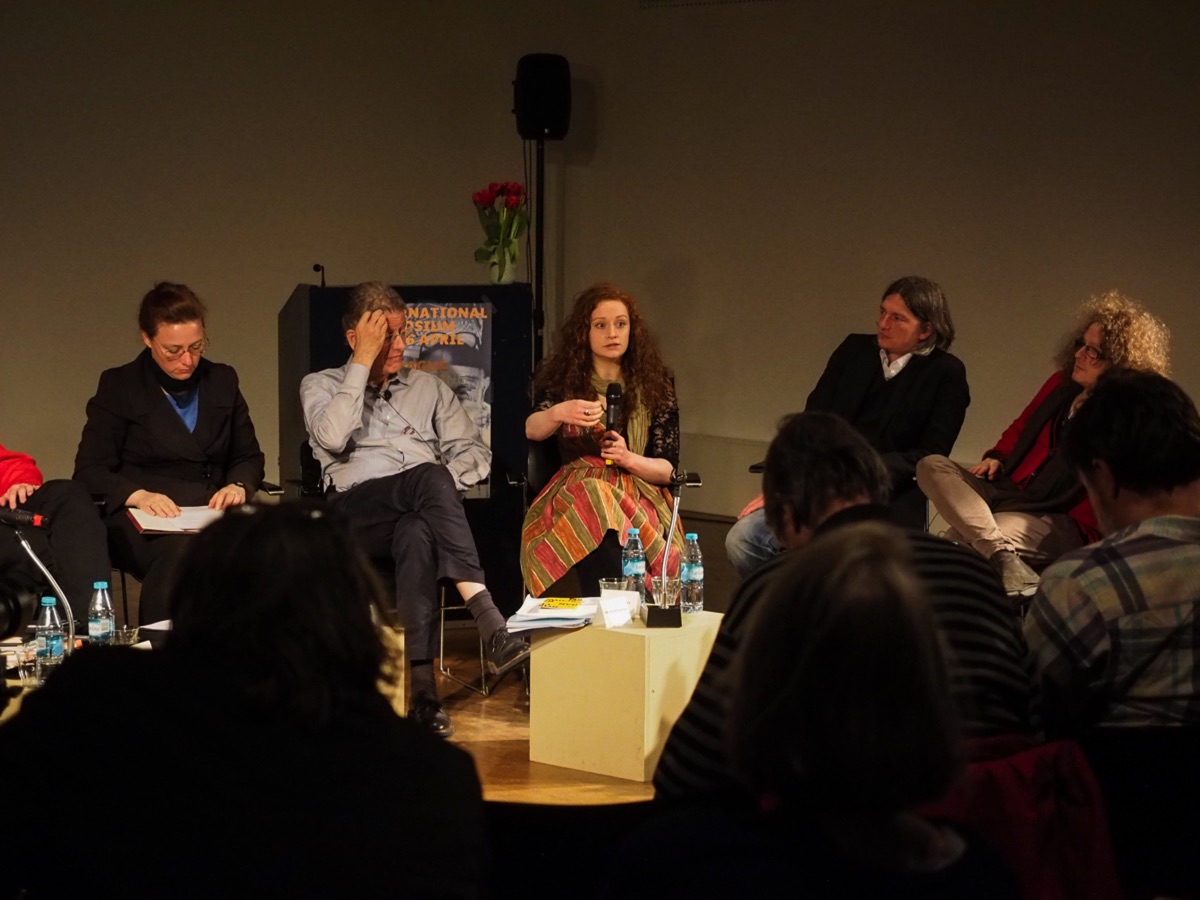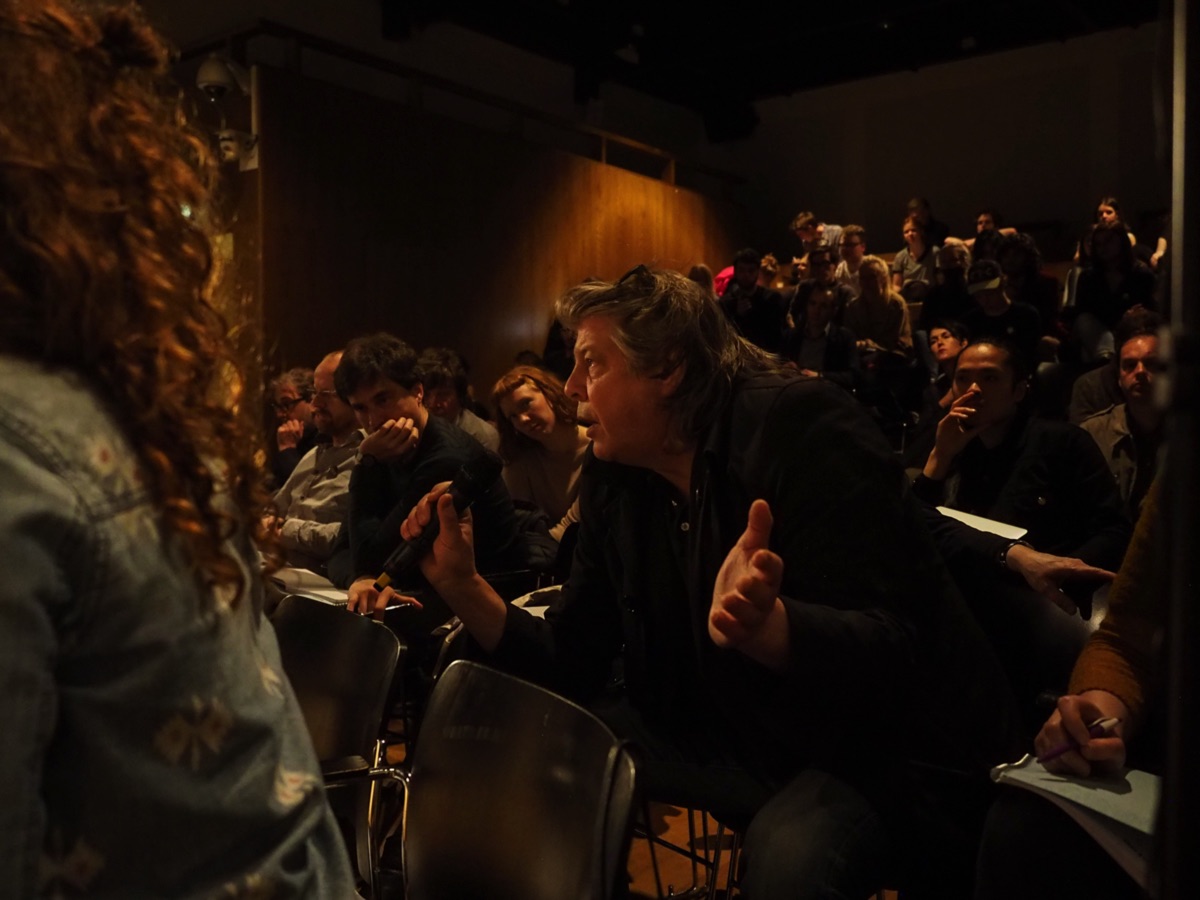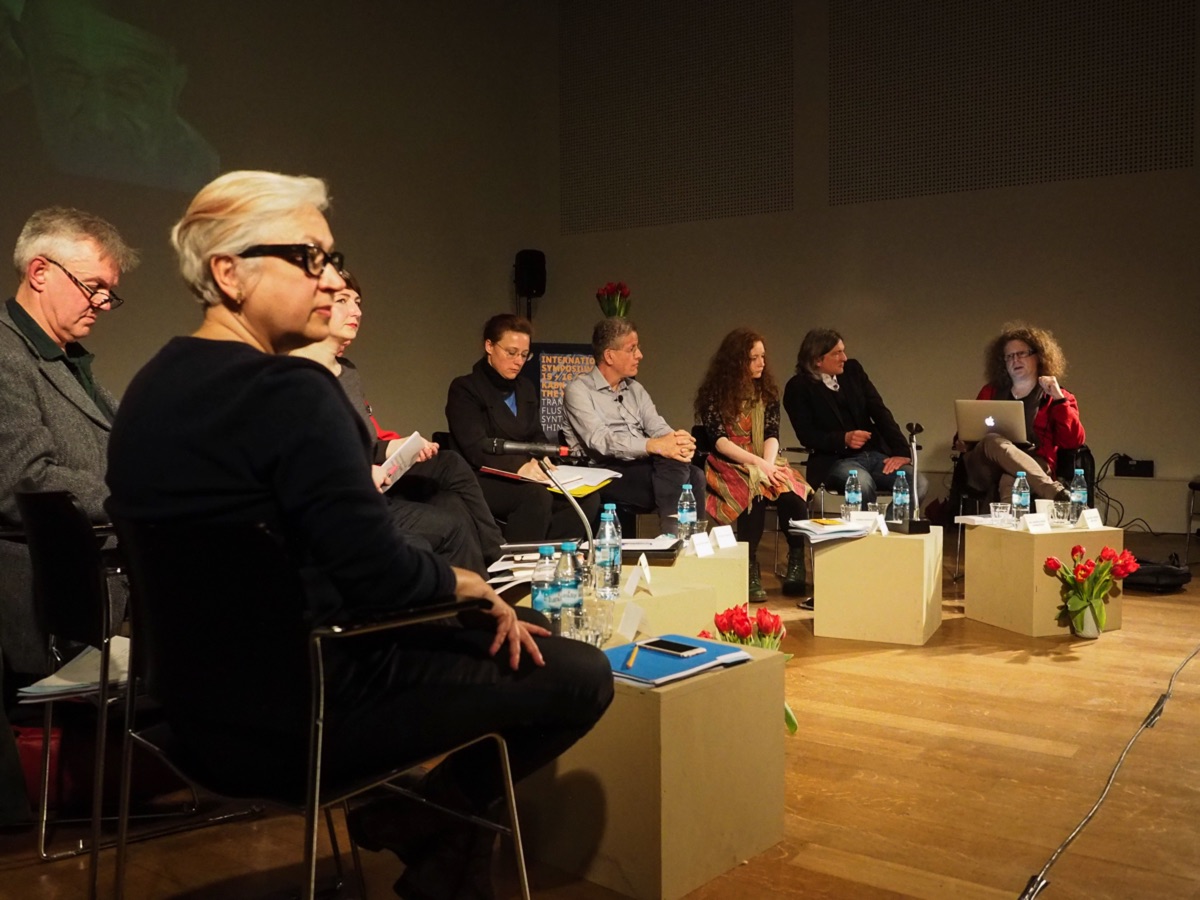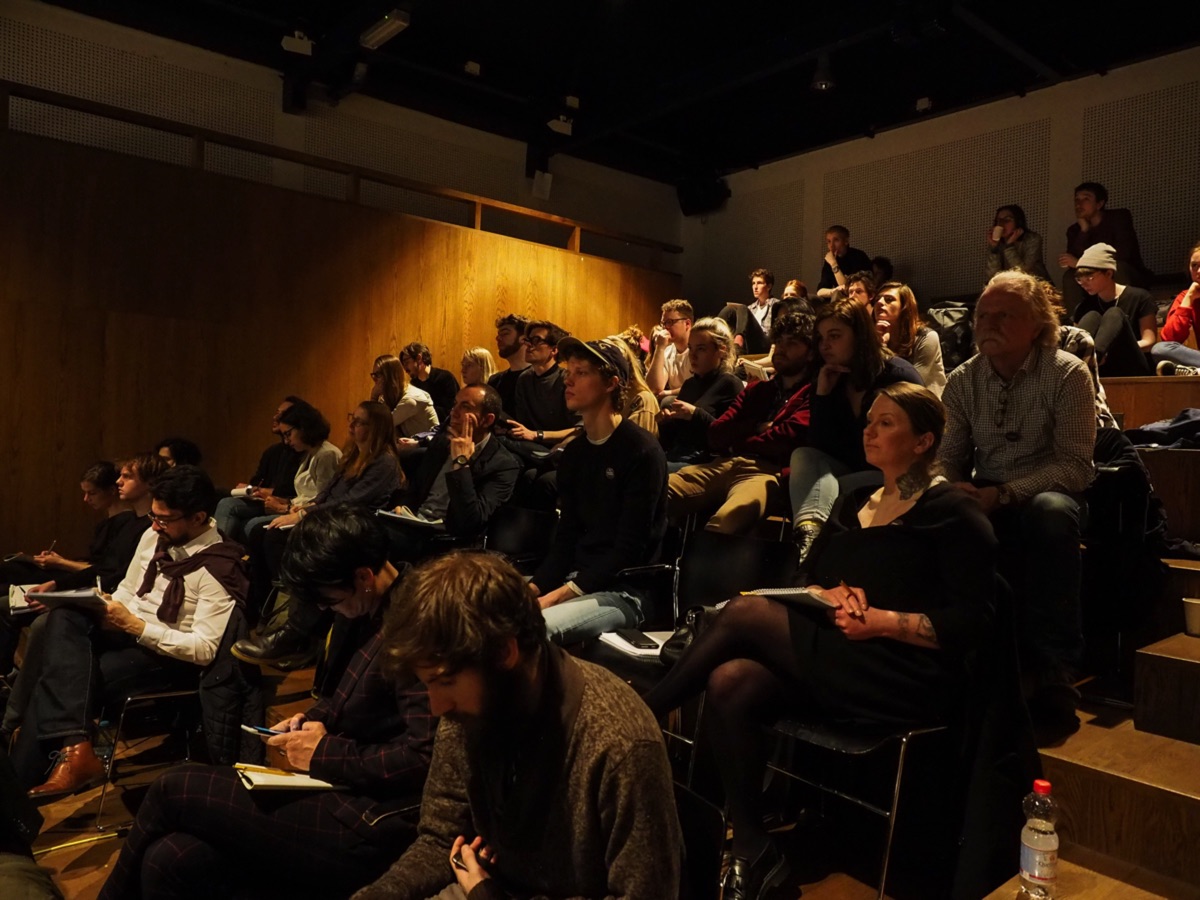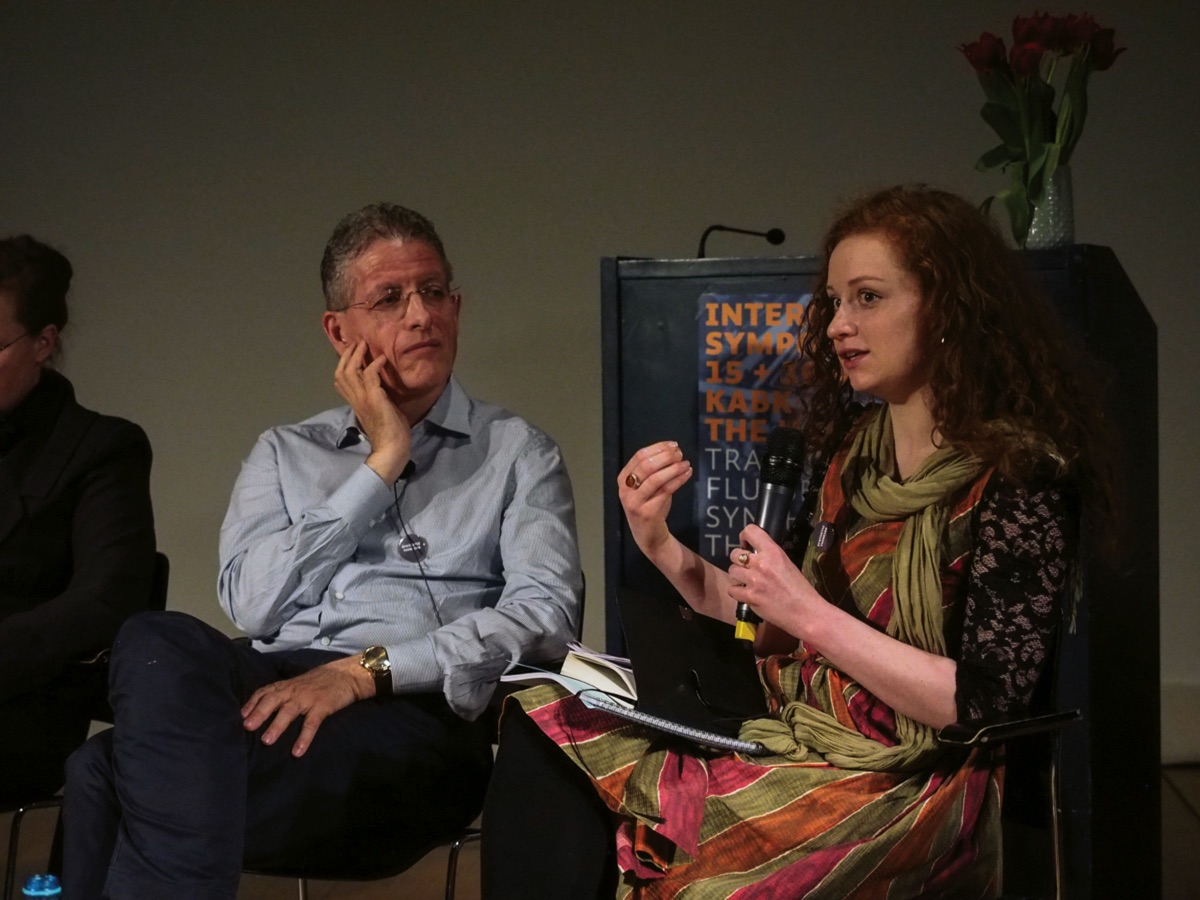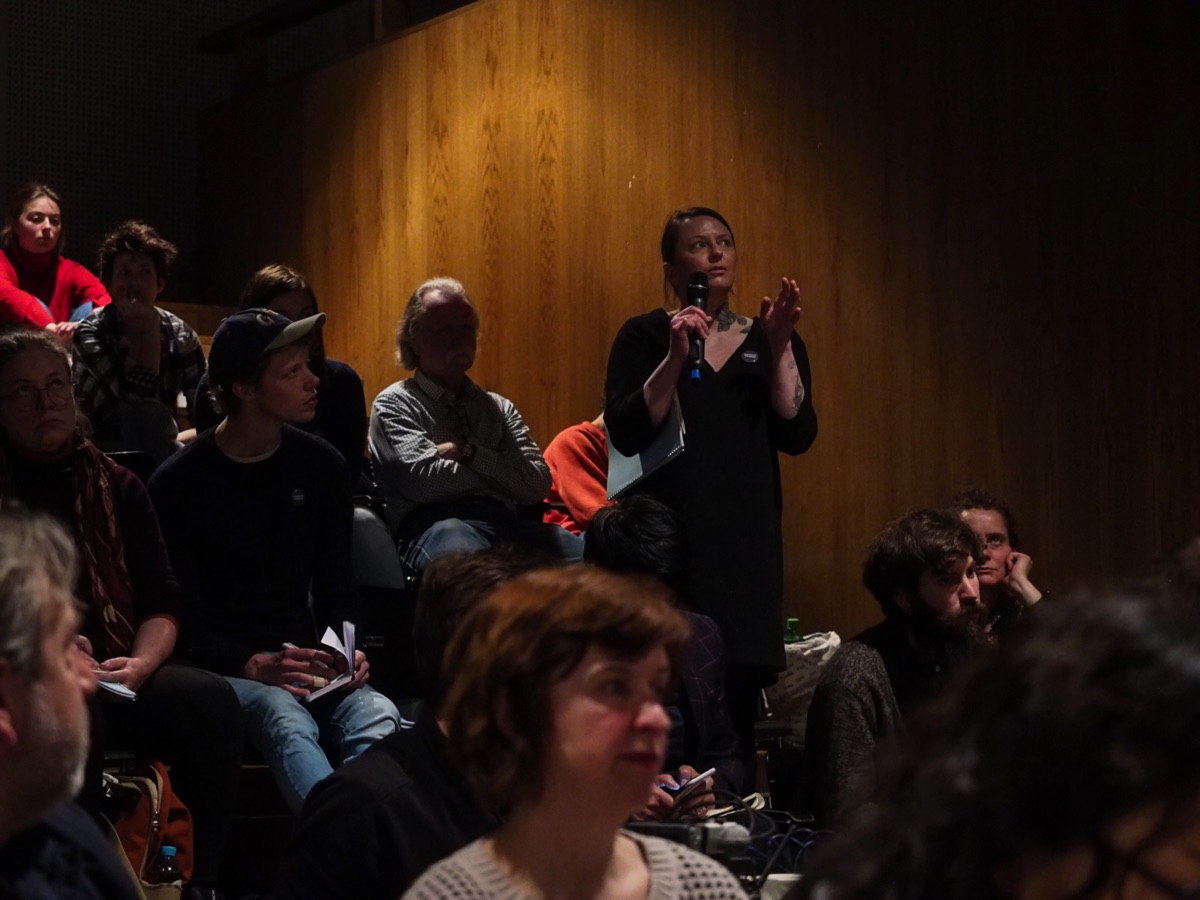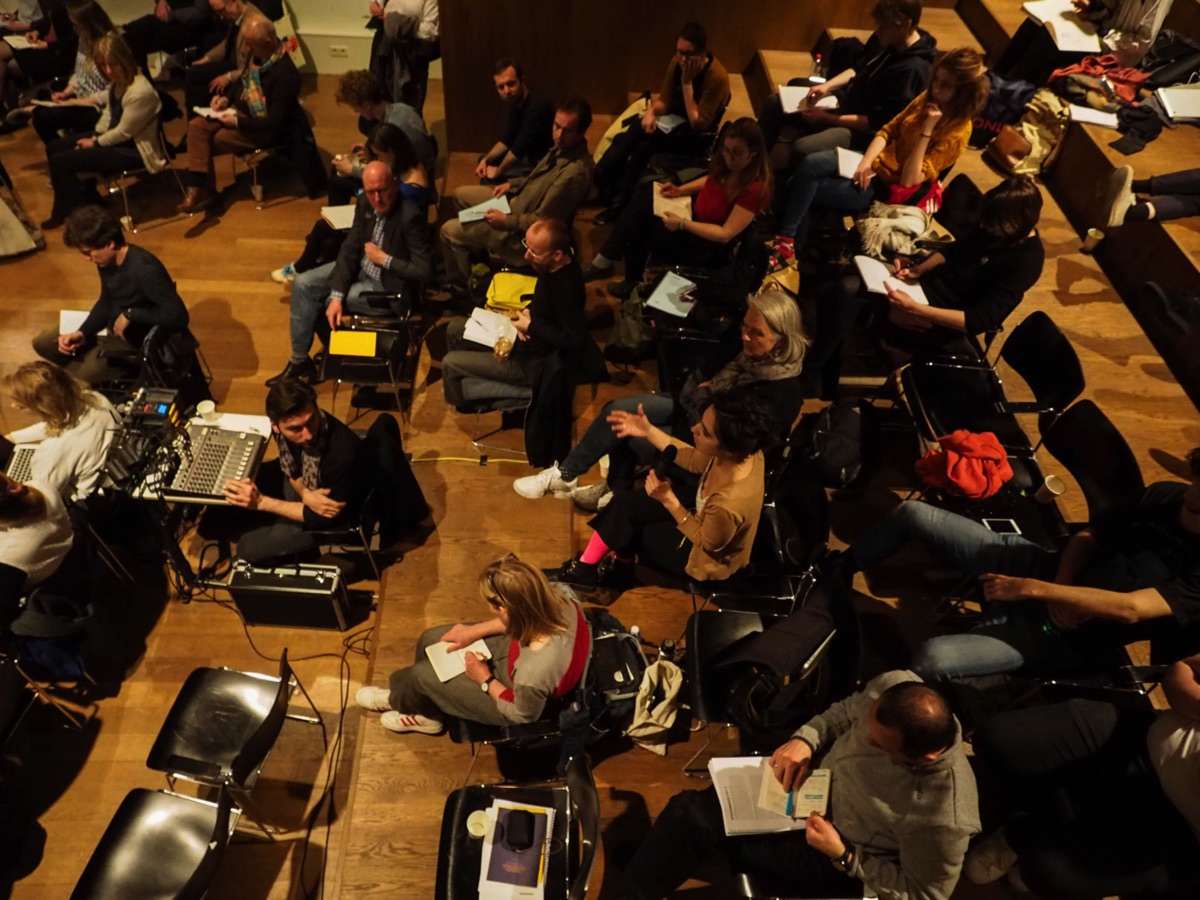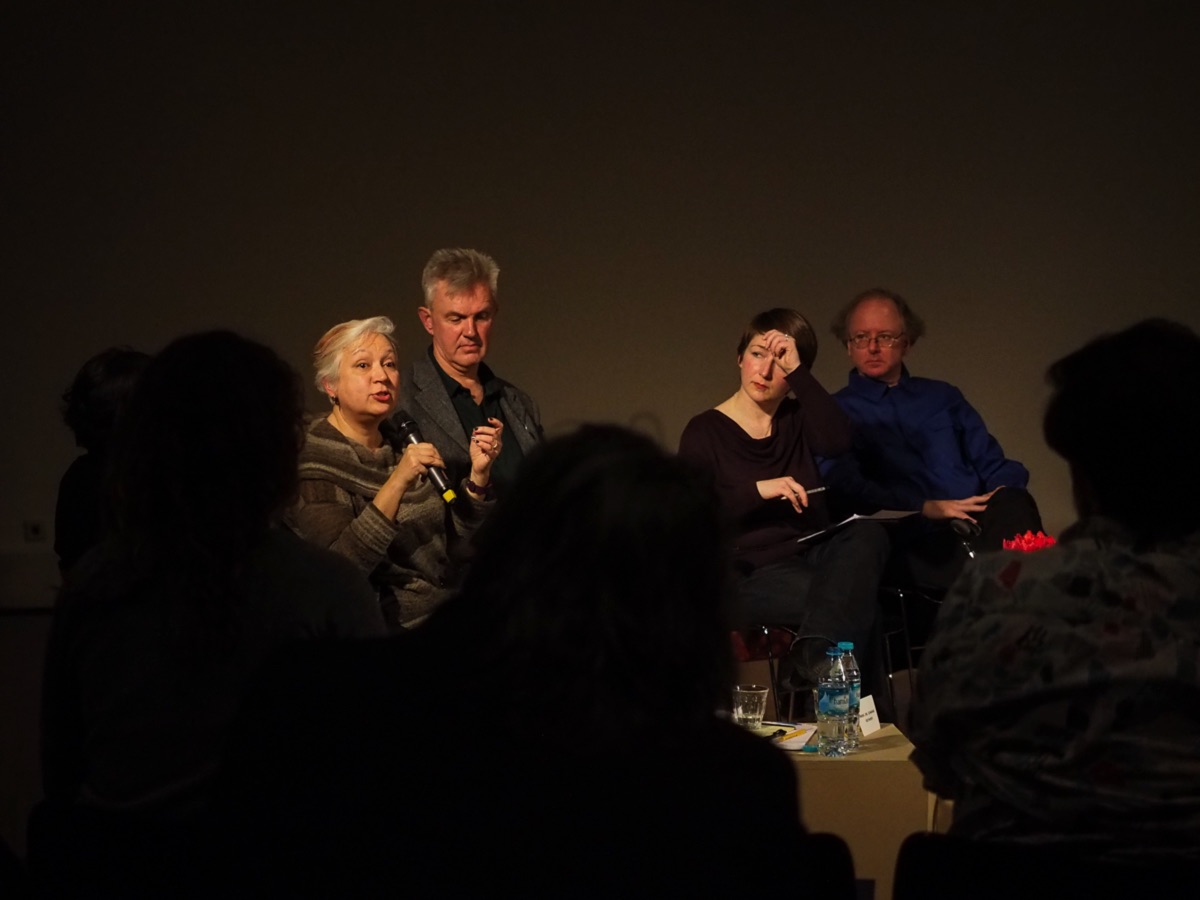Without Firm Ground
Vilém Flusser and the Arts
In cooperation with the ZKM | Zentrum für Kunst und Medientechnologie, Karlsruhe & Akademie der Künste Berlin
19.03.2016 — 07.05.2016Vilém Flusser and the Arts
In cooperation with the ZKM | Zentrum für Kunst und Medientechnologie, Karlsruhe & Akademie der Künste Berlin
Without Firm Ground
Vilém Flusser and the Arts
In cooperation with the ZKM | Zentrum für Kunst und Medientechnologie, Karlsruhe & Akademie der Künste Berlin
19.03.2016 — 07.05.2016Vilém Flusser and the Arts
In cooperation with the ZKM | Zentrum für Kunst und Medientechnologie, Karlsruhe & Akademie der Künste Berlin
Transcoding Flusser: Synthetic Thinking
April 15 & 16, 2016
see video recordings
International symposium with Fiona Hanley, Dr. Rainer Guldin, Katerina Krtilova, PD Dr. Peter Mahr, Dr. Marcel René Marburger, Arjen Mulder, Prof. Dr. Simone Osthoff, Polona Tratnik. Convened & moderated by Dr. phil. Baruch Gottlieb & Steffi Winkler.
Presented in cooperation with the Lectorate Art Theory & Practice, Royal Academy of Art (KABK).
April 15 & 16, 2016
see video recordings
International symposium with Fiona Hanley, Dr. Rainer Guldin, Katerina Krtilova, PD Dr. Peter Mahr, Dr. Marcel René Marburger, Arjen Mulder, Prof. Dr. Simone Osthoff, Polona Tratnik. Convened & moderated by Dr. phil. Baruch Gottlieb & Steffi Winkler.
Presented in cooperation with the Lectorate Art Theory & Practice, Royal Academy of Art (KABK).
pictures by Gordon Meuleman
Program Symposium
Transcoding Flusser: Synthetic Thinking
Venue: KABK, Prinsessegracht 4, Den HaagTranscoding Flusser: Synthetic Thinking
April 15 & 16, 2016
FRIDAY 15 APRIL 2016
| 9:30‑10:00 | Registration |
| 10:00‑10:10 | Welcome by Marie-José Sondeijker (director West Den Haag) |
| 10:10‑10:30 | Welcome + introduction Moderators: Dr. phil. Baruch Gottlieb & Steffi Winkler |
| 10:30‑11:15 | Model for energetic dialogue by the Moderators |
| 11:15‑12:00 | Presentation: Dr. Rainer Guldin 'Cotton Wool. On Flusserian Terminology' |
| 12:00‑12:30 | Coffee break |
| 12:30‑13:15 | Presentation: PD Dr. Peter Mahr 'Flusser, phenomenology and television art' |
| 13:15‑14:00 | Presentation: Dr. Fiona Hanley 'Encountering Bibliophagus: An Aesthetics of Reading' |
| 14:00‑15:30 | Lunch and 'Christiaan Huygens & Baruch de Spinoza Spaziergang’ |
| 15:30‑16:15 | Presentation: Dr. Polona Tratnik 'The concept of an artist in Flusser's thought' |
| 16:15‑17:00 | Presentation: Prof. Dr. Marcel René Marburger 'From Science to Fiction-considering Vilém Flusser as an artist’ |
| 17:00‑18:00 | Synthesis of the first day: Flusser Talks |
| 18:30‑19:30 | Drinks + Exhibition: 'Without Firm Ground-Vilém Flusser and the Arts' (Venue: West Den Haag, Groenewegje 136) |
SATURDAY 16 APRIL 2016
| 11:00‑11:45 | Model for energetic dialogue by the Moderators |
| 11:45‑12:30 | Presentation: Prof. Dr. Simone Osthoff 'Raising the Temperature of the Conversation in the 21st Century' |
| 12:30‑13:15 | Presentation: Arjen Mulder 'Dialogical images in an environment of data' |
| 13:15‑14:15 | Lunch: Black beans & rice |
| 14:15‑15:00 | Presentation: Katerina Krtilova 'Can we think computation only in numbers?' |
| 15:00‑16:00 | Synthesis of the second day: Flusser Talks |
| 17:30‑19:30 | Round up + Drinks (Venue: beach café) |
Each presentation in this colloquium is followed by general discussion period.
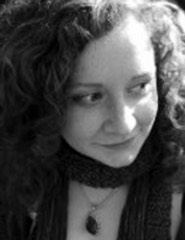 Dr. Fiona Hanley. With a background originally in English Literature from UCD Dublin, Hanley's interests have always been poetic in nature. In 2008 she received an MSc in Cultural Studies at the University of Edinburgh with a dissertation entitled 'Practicing Poetic Theory: Speaking Nearby Trinh T. Minh-ha' and she has just recently received her PhD in Cultural Studies with a thesis entitled 'Towards a Language of Inquiry: The Gesture of Etho-Poetic Thinking'. Drawing upon phenomenological approaches to inquiry and in particular Heidegger's articulation of 'Care', this work attempted to sketch-out the poesis of a thin'king that cannot be divorced from being. Fiona has enjoyed collaborative work curating an international symposium 'Extending Gesture'. She teaches research-led seminars at the University of Edinburgh and her interests continue to lie in tracing out possibilities of the implicit.
Dr. Fiona Hanley. With a background originally in English Literature from UCD Dublin, Hanley's interests have always been poetic in nature. In 2008 she received an MSc in Cultural Studies at the University of Edinburgh with a dissertation entitled 'Practicing Poetic Theory: Speaking Nearby Trinh T. Minh-ha' and she has just recently received her PhD in Cultural Studies with a thesis entitled 'Towards a Language of Inquiry: The Gesture of Etho-Poetic Thinking'. Drawing upon phenomenological approaches to inquiry and in particular Heidegger's articulation of 'Care', this work attempted to sketch-out the poesis of a thin'king that cannot be divorced from being. Fiona has enjoyed collaborative work curating an international symposium 'Extending Gesture'. She teaches research-led seminars at the University of Edinburgh and her interests continue to lie in tracing out possibilities of the implicit.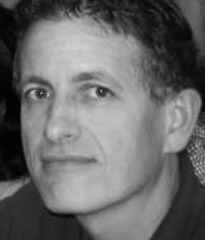 Rainer Guldin is lecturer for German Language and Culture at the Faculties of Communication and Economic Sciences at the Università della Svizzera Italiana (USI) in Lugano, Switzerland. He also lectures at the University of St. Gallen (HSG) (Switzerland). He taught courses and held seminars at the Universidade do Estado do Rio de Janeiro (UERJ) in Brazil, at Bauhaus Universität in Weimar (Germany) and the Centre for Translation and Intercultural Studies of the University of Manchester (England). He was visiting professor (Cathedra IEAT/Fundep) at the Universidade Federal de Minas Gerais in Belo Horizonte (UFMG). He studied English and German Literature in Zürich and Birmingham (England). His Ph.D. thesis focused on Hubert Fichte. He is Editor-in-Chief of the peer-reviewed open access e-journal Flusser Studies http://www.flusserstudies.net/. Main areas of research besides Vilém Flusser: metaphor theory; history and theory of translation and self-translation; translingual writing and multilingualism in literary texts; history of the body; landscape theory. Recent publications: ‘Translation as Metaphor’, Routledge, New York, 2015 and ‘Politische Landschaften. Zum Verhältnis von Raum und nationaler Identität’, transcript Verlag, Bielefeld, 2014.
Rainer Guldin is lecturer for German Language and Culture at the Faculties of Communication and Economic Sciences at the Università della Svizzera Italiana (USI) in Lugano, Switzerland. He also lectures at the University of St. Gallen (HSG) (Switzerland). He taught courses and held seminars at the Universidade do Estado do Rio de Janeiro (UERJ) in Brazil, at Bauhaus Universität in Weimar (Germany) and the Centre for Translation and Intercultural Studies of the University of Manchester (England). He was visiting professor (Cathedra IEAT/Fundep) at the Universidade Federal de Minas Gerais in Belo Horizonte (UFMG). He studied English and German Literature in Zürich and Birmingham (England). His Ph.D. thesis focused on Hubert Fichte. He is Editor-in-Chief of the peer-reviewed open access e-journal Flusser Studies http://www.flusserstudies.net/. Main areas of research besides Vilém Flusser: metaphor theory; history and theory of translation and self-translation; translingual writing and multilingualism in literary texts; history of the body; landscape theory. Recent publications: ‘Translation as Metaphor’, Routledge, New York, 2015 and ‘Politische Landschaften. Zum Verhältnis von Raum und nationaler Identität’, transcript Verlag, Bielefeld, 2014.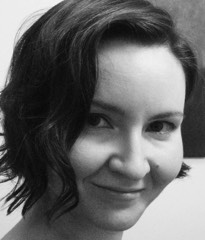 Katerina Krtilova is a researcher and coordinator of the Kompetenzzentrum Medienanthropologie (Competence Center for Media Anthropology) at Bauhaus-Universität Weimar. She has recently finished her dissertation on Vilém Flusser’s media philosophy at Bauhaus-Universität Weimar. After graduating in Media Studies, Philosophy and Humanities in Prague she worked as a research assistant at Charles University in Prague and the Internationales Kolleg für Kulturtechnikforschung und Medienphilosophie (International Research Institute for Cultural Techniques and Media Philosophy) in Weimar. In 2013/2014 initiated and coordinated the DFG funded research project ‘Positions and Perspectives of German and Czech Media Philosophy’; since 2014 she is a member of the editorial board of the Internationales Jahrbuch für Medienphilosophie (International Journal for Media Philosophy). Recent publications: „Media matter. Materiality and Performativity in Media Theory’, in: Bernd Herzogenrath (ed.), Media | Matter. London/New York 2015; ‘Anderes Erkennen. Zur Greifbarkeit und Undurchdringlichkeit medialer Praktiken’, in: Jörg Sternagel, Dieter Mersch und Lisa Stertz (ed.), ‘Kraft der Alterität. Ethische und aisthetische Dimensionen des Performativen’. Bielefeld 2015; ‘Medienreflexiv. Zur Genese eines Verfahrens zwischen Martin Heidegger und Vilém Flusser’ in: ‘Internationales Jahrbuch für Medienphilosophie 1/2015’.
Katerina Krtilova is a researcher and coordinator of the Kompetenzzentrum Medienanthropologie (Competence Center for Media Anthropology) at Bauhaus-Universität Weimar. She has recently finished her dissertation on Vilém Flusser’s media philosophy at Bauhaus-Universität Weimar. After graduating in Media Studies, Philosophy and Humanities in Prague she worked as a research assistant at Charles University in Prague and the Internationales Kolleg für Kulturtechnikforschung und Medienphilosophie (International Research Institute for Cultural Techniques and Media Philosophy) in Weimar. In 2013/2014 initiated and coordinated the DFG funded research project ‘Positions and Perspectives of German and Czech Media Philosophy’; since 2014 she is a member of the editorial board of the Internationales Jahrbuch für Medienphilosophie (International Journal for Media Philosophy). Recent publications: „Media matter. Materiality and Performativity in Media Theory’, in: Bernd Herzogenrath (ed.), Media | Matter. London/New York 2015; ‘Anderes Erkennen. Zur Greifbarkeit und Undurchdringlichkeit medialer Praktiken’, in: Jörg Sternagel, Dieter Mersch und Lisa Stertz (ed.), ‘Kraft der Alterität. Ethische und aisthetische Dimensionen des Performativen’. Bielefeld 2015; ‘Medienreflexiv. Zur Genese eines Verfahrens zwischen Martin Heidegger und Vilém Flusser’ in: ‘Internationales Jahrbuch für Medienphilosophie 1/2015’.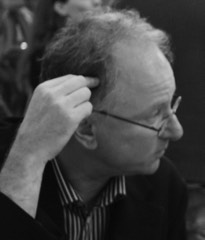 PD Dr. Peter Mahr is a lecturer in philosophical aesthetics at the University of Vienna, Austria: 2006 Habilitation for philosophical aesthetics at Universität Wien; 1998-2008 website mahr’s vierteljahrsschriftfürästhetik; 1990-92 Visiting Scholar at Columbia University/New York and University of California at Berkeley; since 1987 funded research projects for Austrian Science Funds and other research institutions; since 1986 lecturing for universities in Vienna, Linz, Innbruck and Weimar (visiting professor in 2010/11); 1986-90 art criticism for Falter (Wien), Artis, Artscribe International, Flash Art, Kunstforum International, Kunstpresse, Noema International; 1985 Dr. phil. with Hegels Kritik der Wissenschaft in seinem System von 1807.
PD Dr. Peter Mahr is a lecturer in philosophical aesthetics at the University of Vienna, Austria: 2006 Habilitation for philosophical aesthetics at Universität Wien; 1998-2008 website mahr’s vierteljahrsschriftfürästhetik; 1990-92 Visiting Scholar at Columbia University/New York and University of California at Berkeley; since 1987 funded research projects for Austrian Science Funds and other research institutions; since 1986 lecturing for universities in Vienna, Linz, Innbruck and Weimar (visiting professor in 2010/11); 1986-90 art criticism for Falter (Wien), Artis, Artscribe International, Flash Art, Kunstforum International, Kunstpresse, Noema International; 1985 Dr. phil. with Hegels Kritik der Wissenschaft in seinem System von 1807.Publications: 2015 Philosophie von Bacon bis Freud, Wien: facultas.wuv; 2009 (co-editor) Immanuel Kant, Kritik der Urteilskraft; 2003 Einführung in die Kunstphilosophie. Das Ästhetische und seine Objekte, Wien: Löcker; 2003 (Hg.) Österreichische Ästhetik. 19 Interviews von Peter Mahr, Klagenfurt/Wien: Ritter; 1996 (Hg.) Erinnerung an Moritz Schlick. Ausstellungen und Ausstellungskatalog anläßlich des 60. Todestages, Wien: Österreichische Nationalbibliothek.'
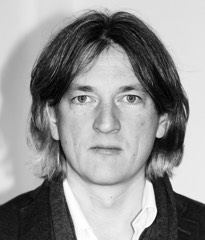 Marcel René Marburger is Professor in the Faculty of Design at the University of Applied Sciences and Arts Dortmund, teaching Art-, Media- and Design-Theory. He studied Art History, German Literature, and Philosophy at the University of Cologne and did his PhD about the art theoretical relevance in Vilém Flusser’s writings. He was lecturer at the Academy of Media Arts Cologne and at the Academy of Fine Arts Dresden, lecturer and research fellow at the University of Arts Berlin as well as scientific assistant at the University of Potsdam. He was scientific supervisor of the VilémFlusserArchive and is co-editor of the ‘International Flusser Lecture’s.
Marcel René Marburger is Professor in the Faculty of Design at the University of Applied Sciences and Arts Dortmund, teaching Art-, Media- and Design-Theory. He studied Art History, German Literature, and Philosophy at the University of Cologne and did his PhD about the art theoretical relevance in Vilém Flusser’s writings. He was lecturer at the Academy of Media Arts Cologne and at the Academy of Fine Arts Dresden, lecturer and research fellow at the University of Arts Berlin as well as scientific assistant at the University of Potsdam. He was scientific supervisor of the VilémFlusserArchive and is co-editor of the ‘International Flusser Lecture’s.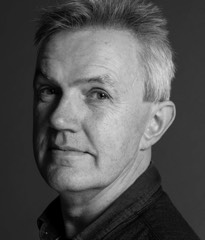 Arjen Mulder is a biologist and media theorist and has published several books of essays on the relationship between technical media, physical experiences and art. His books include 5 Dutch books with essays, including Het fotografisch genoegen (The Photographic Enjoyment, 2000) and ‘De vrouw voor wie Cesare Pavese zelfmoord pleegde’ (The Woman for whom Cesare Pavese Committed Suicide, 2005), and ‘Wat is leven? ‘(What is Life? 2014) In English: ‘Book for the Electronic Arts’ (with Maaike Post, 2000), ‘Understanding Media Theory’ (2004) and ‘From Image to Interaction’ (2010). With Joke Brouwer, he edited a series of books including ‘transUrbanism’ (2002), ‘Information Is Alive’ (2003), ‘Feelings Are Always Local’ (2004), ‘aRt&D: Research and Development in Art’ (with Anne Nigten, 2005), ‘Interact or Die! ‘(2007, MediaArtResearchAward 2008 at Ars Electronica), ‘Dick Raaymakers Monography’ (2008), ‘The Politics of the Impure’ (2010) and ‘Vital Beauty’ (2012). He lives in Amsterdam, Holland, and teaches media theory and social semiotics in Rotterdam and Ghent (BE).
Arjen Mulder is a biologist and media theorist and has published several books of essays on the relationship between technical media, physical experiences and art. His books include 5 Dutch books with essays, including Het fotografisch genoegen (The Photographic Enjoyment, 2000) and ‘De vrouw voor wie Cesare Pavese zelfmoord pleegde’ (The Woman for whom Cesare Pavese Committed Suicide, 2005), and ‘Wat is leven? ‘(What is Life? 2014) In English: ‘Book for the Electronic Arts’ (with Maaike Post, 2000), ‘Understanding Media Theory’ (2004) and ‘From Image to Interaction’ (2010). With Joke Brouwer, he edited a series of books including ‘transUrbanism’ (2002), ‘Information Is Alive’ (2003), ‘Feelings Are Always Local’ (2004), ‘aRt&D: Research and Development in Art’ (with Anne Nigten, 2005), ‘Interact or Die! ‘(2007, MediaArtResearchAward 2008 at Ars Electronica), ‘Dick Raaymakers Monography’ (2008), ‘The Politics of the Impure’ (2010) and ‘Vital Beauty’ (2012). He lives in Amsterdam, Holland, and teaches media theory and social semiotics in Rotterdam and Ghent (BE).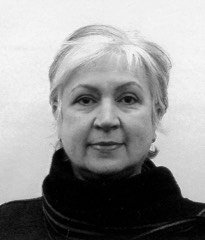 Simone Osthoff is Professor of Art and Critical Studies in the School of Visual Arts at the Pennsylvania State University. A Brazilian-born artist and scholar, she holds a M.F.A. from the University of Maryland, a M.A. from The School of the Art Institute of Chicago, and a Ph.D. from the European Graduate School. Her research on contemporary art, theory, and criticism focuses on experimental art practices and histories. A frequent participant in international symposia, she is the author of ‘Performing the Archive: The Transformation of the Archive in Contemporary Art from Repository of Documents to Art Medium’, besides numerous book chapters, essays, and reviews. Osthoff organized a special issue about ‘Flusser and Art’ for the ‘Flusser Studies’ journal in 2009, and since 2013 have been on its editorial board.
Simone Osthoff is Professor of Art and Critical Studies in the School of Visual Arts at the Pennsylvania State University. A Brazilian-born artist and scholar, she holds a M.F.A. from the University of Maryland, a M.A. from The School of the Art Institute of Chicago, and a Ph.D. from the European Graduate School. Her research on contemporary art, theory, and criticism focuses on experimental art practices and histories. A frequent participant in international symposia, she is the author of ‘Performing the Archive: The Transformation of the Archive in Contemporary Art from Repository of Documents to Art Medium’, besides numerous book chapters, essays, and reviews. Osthoff organized a special issue about ‘Flusser and Art’ for the ‘Flusser Studies’ journal in 2009, and since 2013 have been on its editorial board.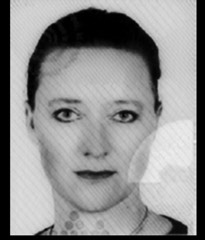 Polona Tratnik, Ph.D., Senior Research Associate and Associate Professor for philosophy of culture and theory of art and media, is president of the Slovenian Society of Aesthetics and holds courses at the Faculty for Media and Communication in Belgrade (2015–) and at the University of Maribor and the Faculty for Design in Slovenia. She was Head of the Department for Cultural Studies, Faculty of Humanities, University of Primorska, a Fulbright Visiting Scholar and Guest Professor at University of California Santa Cruz (2012), and a Guest Professor in Bejing, China, Helsinki, Finland, and Mexico City, Mexico. She authors five monographs, among others the ‘Hacer-vivir más allá del cuerpo y del medio’ (Mexico City: Herder, 2013).
Polona Tratnik, Ph.D., Senior Research Associate and Associate Professor for philosophy of culture and theory of art and media, is president of the Slovenian Society of Aesthetics and holds courses at the Faculty for Media and Communication in Belgrade (2015–) and at the University of Maribor and the Faculty for Design in Slovenia. She was Head of the Department for Cultural Studies, Faculty of Humanities, University of Primorska, a Fulbright Visiting Scholar and Guest Professor at University of California Santa Cruz (2012), and a Guest Professor in Bejing, China, Helsinki, Finland, and Mexico City, Mexico. She authors five monographs, among others the ‘Hacer-vivir más allá del cuerpo y del medio’ (Mexico City: Herder, 2013).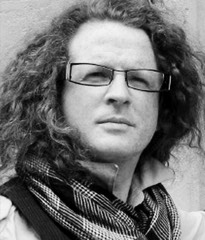 Baruch Gottlieb trained as a filmmaker at Concordia University, has been working in electronic art with professional specialization in public art since 1999. He is an active member of telekommunisten, arts & economics group and laboratoire deberlinisation arts collectives. He founded and curated the first Korean Sound Art festival SFX Seoul and initiated the perfomative archives series ‘McLuminations’ (on the work of Marshall McLuhan) and ‘Flusser Talks’ (on the work of Vilém Flusser), Gottlieb is the author of ‘Gratitude for technology’ (2009, Atropos) and ‘A Political Economy of the Smallest Things’ (2016, Atropos). He currently lectures at the University of Arts Berlin. With Siegfried Zielinski and Peter Weibel, he curated the exhibition series Vilém Flusser and the Arts.
Baruch Gottlieb trained as a filmmaker at Concordia University, has been working in electronic art with professional specialization in public art since 1999. He is an active member of telekommunisten, arts & economics group and laboratoire deberlinisation arts collectives. He founded and curated the first Korean Sound Art festival SFX Seoul and initiated the perfomative archives series ‘McLuminations’ (on the work of Marshall McLuhan) and ‘Flusser Talks’ (on the work of Vilém Flusser), Gottlieb is the author of ‘Gratitude for technology’ (2009, Atropos) and ‘A Political Economy of the Smallest Things’ (2016, Atropos). He currently lectures at the University of Arts Berlin. With Siegfried Zielinski and Peter Weibel, he curated the exhibition series Vilém Flusser and the Arts.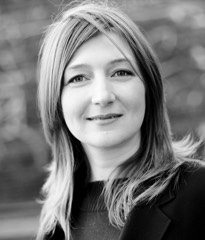 Steffi Winkler is currently doing research at the Vilém Flusser Archive, UdK Berlin and at the Institute of Media and Communication Studies, Freie Universität Berlin. Her doctoral thesis aims to explore the processes of transformation of communication structures with regard to new forms of weltanschauung, self-image and responsibility. For several years her research and teaching has been dedicated to the works of Hannah Arendt, Vilém Flusser and Marshall McLuhan. Recent Publications: „Techno-imagining Flusser. Towards an open, media-rich Flusser research and publishing infrastructure. In: Flusser Studies 20, Dec 2015; „Abstraktion. Abstraction', „Individuum. Individual', „Verantwortung. Responsibility', „Griechentum. Ancient Greece', „Logik. Logic'. In: Flusseriana, ed. by Siegfried Zielinski, Peter Weibel and Daniel Irrgang, 2015; „Spiel der Freiheit oder: Bewußtes Träumen miteinander. Vilém Flusser zur Kulturtechnik des apparativen Spielens als neuem Zugang zur Welt'. In: Play it again, Vilém!, ed. with Hermann Haarmann and Michael Hanke, 2015.
Steffi Winkler is currently doing research at the Vilém Flusser Archive, UdK Berlin and at the Institute of Media and Communication Studies, Freie Universität Berlin. Her doctoral thesis aims to explore the processes of transformation of communication structures with regard to new forms of weltanschauung, self-image and responsibility. For several years her research and teaching has been dedicated to the works of Hannah Arendt, Vilém Flusser and Marshall McLuhan. Recent Publications: „Techno-imagining Flusser. Towards an open, media-rich Flusser research and publishing infrastructure. In: Flusser Studies 20, Dec 2015; „Abstraktion. Abstraction', „Individuum. Individual', „Verantwortung. Responsibility', „Griechentum. Ancient Greece', „Logik. Logic'. In: Flusseriana, ed. by Siegfried Zielinski, Peter Weibel and Daniel Irrgang, 2015; „Spiel der Freiheit oder: Bewußtes Träumen miteinander. Vilém Flusser zur Kulturtechnik des apparativen Spielens als neuem Zugang zur Welt'. In: Play it again, Vilém!, ed. with Hermann Haarmann and Michael Hanke, 2015.
About the symposium
Linguistic communication, both the spoken and written world, are no longer capable of transmitting the thoughts and concepts which we have concerning the world. [...] It has been clear for several centuries now that, if we want to understand the world, it is not sufficient to describe it by words. It is necessary to calculate the world. So that science has had ever more recurrence to numbers which are images of thoughts. [...] Numbers are being transcoded into digital codes and digital codes are, themselves, being transcoded into synthetic images. So it is my firm belief, that if you want to have a clear and distinct communication of your concepts, you have to use synthetic images, no longer words. And this is a veritable revolution in thinking.
Vilém Flusser, On writing, complexity and the technical revolutions, 1988. In: „We shall survive in the memory of others“, 2010
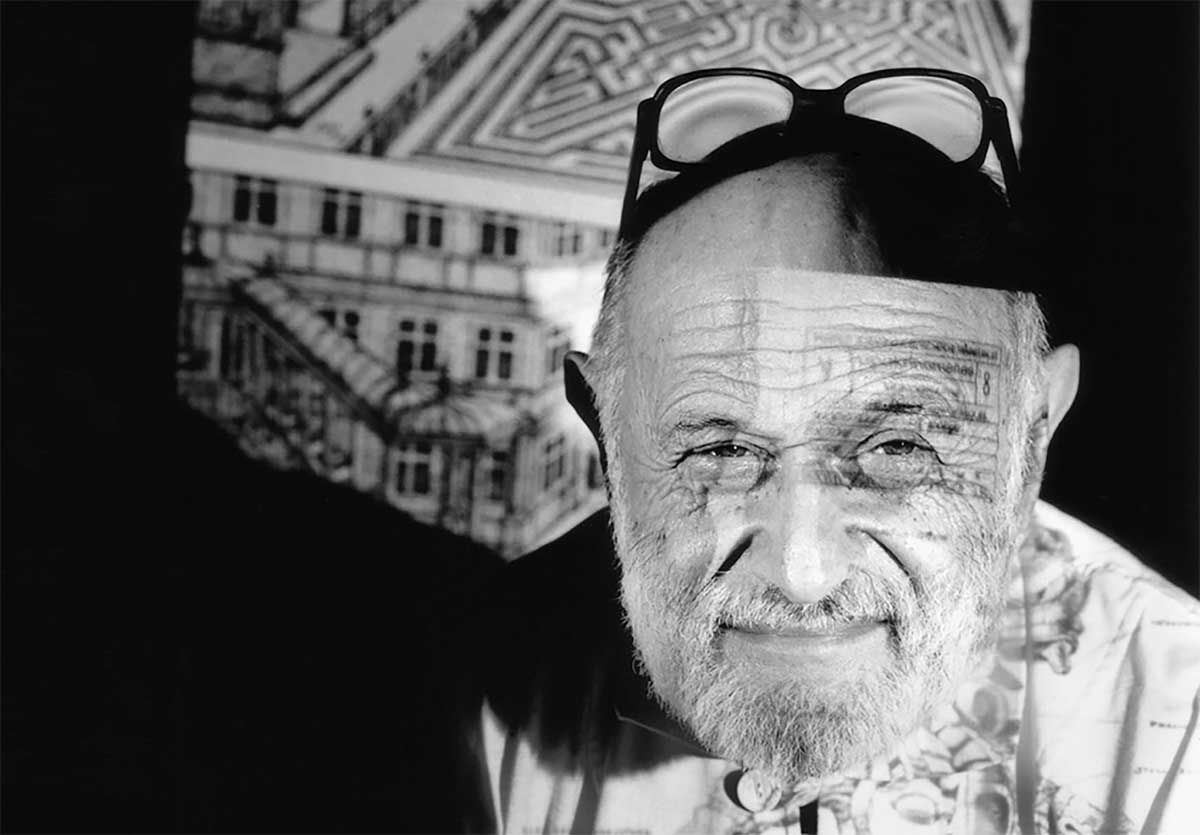 Photo Vilém Flusser: Ed Sommar
Photo Vilém Flusser: Ed Sommar
Computer codes, especially the code of synthetic images promises an inter-subjective Utopia, suggests Vilém Flusser. Drawing attention to ongoing cultural transformations of technical revolutions, Flusser provocatively implores us, the citizens of a world transfused with invisible, light-speed, electronic information exchange, to communicate using synthetic (or technical) images and 'no longer words'. Flusser's poetically composed philosophy attempts to overcome and undermine the tradition of thinking in binary dichotomies, as it aims to transcend the traditional opposition of art and philosophy. Translating between cultural practices, Flusser was dedicated to the transformation of our conditions. In this symposium, we wish to discuss Flusser’s proposals for synthetic image-thinking, particularly the promise of agency he positions there.
In the context of our exhibition BODENLOS: Vilém Flusser and the Arts, Flusser strongly suggested that such exhibitions always be accompanied by a rich participative program, to elaborate the gesture of exhibition through active public engagement with the themes and objects of the display. To this end we are holding a special two-day international symposium with committed Flusserians on April 15th and 16th.
In order to concentrate our reflections and make the most of the synergies of the particular scholars brought together in the space for maybe the first and only time, we have designed a colloquium-style presentation schema where all presenters sit around the table and comment on each-others presentations. The public is invited to assemble around the colloquium and intervene as need be. Our symposium is oriented towards deepening our research interests in Flusser’s writing, connecting his concerns with the contemporary technological environment, and to generating lively and critical dialogues on themes of mutual concern, with each presentation building on the preceding discussions.
Statements
Baruch Gottlieb
Flusser’s project is essentially to save philosophy in the age of highly automated processes. Automation produces technical images which transfix us and hold us in a magical sway and seem to prohibit the rational thought we need to assert any (Enlightenment) autonomy. Flusser urges us that we must use technical images and ‘no longer words’ to understand the world today. This means (to me) that we must learn to philosophize ’technically’. I would like to explore the implications and uspices of this.
Steffi Winkler
Flusser suggests synthetic images may free us from the tyranny of linear thinking, whilst calling us to actively practice ‘new Einbildungskraft’ or techno-imagination. The new about this form of synthesising information might be to transcend, overcome or undermine antipode patterns of thought. ‘Dedicated to synthesis of contrasts’ (1949) Flusser not only translated between cultural poles but strove for a ‘method of cognition ... with aesthetic qualities’, ‘which extends beyond philosophy’ (1951). His poetically composed philosophy transcends the traditional opposition of art and philosophy. Yet, as ‘every technical revolution induces a new mankind which again designs a new technique’ (1991), the challenge facing us is more than merely thinking and acting in new technical ways, we must deliberately co-design. Thus, the transformation at hand may be discussed as a shift away from the dominance of thinking in dichotomies, indicating an interrelational understanding of (re)programming our environments and ourselves that are ‘crystallising’ (1991) in dialogue.
Dr. Rainer Guldin
Cotton Wool. On Flusserian Terminology
Flusser’s attempt to cross-fertilize the disciplines, to synthesize philosophy, art and science, relies on the use of hybrid multifocal terminology. This implies the use of different strategies: horizontal expansion through multiple successive translation, vertical segmentation through etymology, integration of conceptual opposites, crossbreeding between disciplinary areas, metaphorical pairings, exploration of the phonetical and visual side of words, wordplay. These main strategies, furthermore, are not used on their own, but combined in different and always changing ways with each other. The borders of words are not fixed. Words are cloudlike. They overlap, mix and merge. I would like to explore Flusser’s writing and thinking styles in order to approach and understand the challenges stemming from his idiosyncratic innovative methodology.
PD Dr. Peter Mahr
Flusser, phenomenology and television art
In his reflections ‘Für eine Phänomenologie des Fernsehens’ Flusser establishes a carefully elaborated theory of television. This theory draws on discourses like information theory, communication theory, game theory, system theory, cybernetics, anthropology, media theory and social theory. However, the explicit main frame of reference for all of Flusser's endeavor of ‘Für eine Phänomenologie des Fernsehens’ is if not philosophy, so phenomenology. I will focus on the more or less implicit references of ‘Für eine Phänomenologie des Fernsehens’ to its resources in phenomenological philosophy. I will try to shed light on what prompted Flusser to confess to the philosophy of phenomenology. In doing so I will suggest that Flusser was influenced by a representative of what could be termed as television art at the time of origin of ‘Für eine Phänomenologie des Fernsehens’.
Dr. Fiona Hanley Encountering Bibliophagus: An Aesthetics of Reading
Among the creatures, the figures that mark Flusser's writing, a strange one is inscribed in the margins of his oeuvre by the name of bibliophagus. The creature appears only peripherally and yet, as this reader feels, it points to a certain aesthetic approach to reading which inherently informs Flusser's attitude towards writing, in particular his essayistic style, where the purpose is not so much to explain or prove a point as it is to undergo an experience of thinking. In this paper, I wish to journey through this implicit aesthetics of reading to be found throughout Flusser's writing, one which adheres to a dialogic, implicative relation to an other. What the paper is perhaps attempting to work through is what could be called a pseudo question of Flusser's: ‘Does Reading have a Future?’
Dr. Polona Tratnik
The concept of an artist in Flusser's thought
It is interesting to focus on the concept of an artist in Flusser’s thought because Flusser is one of the first scholars to address the systems of technical media, as well as the biotechnological manipulation of the living world, in relation to the issue of programmability. In this regard Flusser questions the position of the actor, the operator or perhaps the creator in these systems. A photographer is the functionary of the apparatus of the camera, homo ludens. Yet, the taking of snapshots is not considered as producing informative images and therefore does not interest Flusser. What is the challenge and the role of a photographer in the act of taking pictures? Who is actually a photographer; is a photographer to be comprehended as an artist? In reference to molecular biology Flusser discusses the issues of variational and true creation. Which type of creation is actually in the province of an artist? How does the activity of an artist differ from the activity of a genetic engineer? Are there similarities between his comprehension of the photographer and the supposed biotechnological artist? And finally, how is an artist to be understood according to Flusser’s thought?
Prof. Dr. Marcel Réné Marburger
From Science to Fiction – considering Vilém Flusser as an Artist
In Flusser’s biography as well as in his writings, one can easily detect a shift from a, let’s say, more traditional and conservative dealing with science in general and the academic world in particular to a more playful and experimental thinking and essayistic writing. One well known climax of this development is his collaboration with Louis Bec creating the ‘Vampy’, as they called it: the Vampyroteuthis infernalis, a work that Abraham Moles described as philosophy- fiction. Parallel to this, Flusser wanted to replace objects in art exhibitions with communicological processes. Now, being an expert in communication himself, could that mean that he is thinking of himself as the artist of the future? Last but not least, he is talking about alternative realities that could arise from ‘zero dimension’, from the endpoint of his media chronological model, with the help of artists; at the same time, he writes in several letters that he wants to translate theory into practice – maybe as one of the artists who are creating those new and unexpected realities?
Prof. Dr. Simone Osthoff
Raising The Temperature Of The Conversation In The 21st Century
My topic relates to both Rainer Guldin’s examination of Flusser’s ‘idiosyncratic and innovative methodology,’ and Arjen Mulder’s evaluation of Flusser’s predictions for a telematics society. How are multimedia artists in the 21st century pushing the conversation regarding dialogism while using data aesthetics as the new raw palette? Data-sets, sampling, looping, layering, translation, climate change, hyper-relativism, net neutrality, surveillance, and generative archives are some of the topics examined, for instance, by the artist-composer Paul Miller aka DJ Spooky, who may include a Donald Trump Tweet in his Digital Fictions project; the documentary filmmaker Laura Poitras, who uses images where ‘nothing is what it seems’; or the artist Giselle Beiguelman’s exploration of possible futures, digital memory and archives.
Arjen Mulder
Dialogical images in an environment of data
The topic I would like to adress at Transcoding Flusser is if any of Flussers predictions about the telematic society and telematic man did come true. Remember those amazing lines from In the Universe of Technical Images: ‘I'm mortal, you're mortal, we are immortal.’ Are we? My theme will be the current state of our 'environment' in the McLuhan sense of the word, and I will try to expand on the notion that our current normality consists of data, and that the dialogical society that Flusser forsaw became reality in the form of Big Data, that have no meaning, only semiotic potential.
Katerina Krtilova
Can we think computation only in numbers?
In line with Baruch’s starting point, namely Flusser trying to save philosophy in the age of a technology that challenges basic assumptions of western metaphysics I would to ask how thinking could change to meet this challenge. In my reading Flusser’s suggestion of a new techno-imagination does not provide an answer, but rather articulates the ‘dead end’ of the technical logic computation is based on: logical-mathematical formalisation as the highest level of abstraction, a kind of second order thinking that allows to recognize and manipulate the structure underlying reality. This kind of thinking can be mechanised and is executed by computers much more effective than human minds. I would suggest to follow Flusser’s critical analysis of the alphanumeric code turning into the universe of computation which is connected to Husserl’s, Heidegger’s or Cassirer’s critique of science and technology, designing phenomenology as a new kind of thinking which cannot be mechanized and cannot be just implemented into digital technology (as author’s like Mark Hansen suggest). At this point we have to criticise Flusser’s argumentation oriented towards techno-imagination and technical images, I believe, but look for new methods of thinking in the performative dimension of his arguments, paying attention to Flusser’s rhetorics in a strong sense, as Rainer suggests – if I understand his approach correctly.
Linguistic communication, both the spoken and written world, are no longer capable of transmitting the thoughts and concepts which we have concerning the world. [...] It has been clear for several centuries now that, if we want to understand the world, it is not sufficient to describe it by words. It is necessary to calculate the world. So that science has had ever more recurrence to numbers which are images of thoughts. [...] Numbers are being transcoded into digital codes and digital codes are, themselves, being transcoded into synthetic images. So it is my firm belief, that if you want to have a clear and distinct communication of your concepts, you have to use synthetic images, no longer words. And this is a veritable revolution in thinking.
Vilém Flusser, On writing, complexity and the technical revolutions, 1988. In: „We shall survive in the memory of others“, 2010
 Photo Vilém Flusser: Ed Sommar
Photo Vilém Flusser: Ed Sommar
Computer codes, especially the code of synthetic images promises an inter-subjective Utopia, suggests Vilém Flusser. Drawing attention to ongoing cultural transformations of technical revolutions, Flusser provocatively implores us, the citizens of a world transfused with invisible, light-speed, electronic information exchange, to communicate using synthetic (or technical) images and 'no longer words'. Flusser's poetically composed philosophy attempts to overcome and undermine the tradition of thinking in binary dichotomies, as it aims to transcend the traditional opposition of art and philosophy. Translating between cultural practices, Flusser was dedicated to the transformation of our conditions. In this symposium, we wish to discuss Flusser’s proposals for synthetic image-thinking, particularly the promise of agency he positions there.
In the context of our exhibition BODENLOS: Vilém Flusser and the Arts, Flusser strongly suggested that such exhibitions always be accompanied by a rich participative program, to elaborate the gesture of exhibition through active public engagement with the themes and objects of the display. To this end we are holding a special two-day international symposium with committed Flusserians on April 15th and 16th.
In order to concentrate our reflections and make the most of the synergies of the particular scholars brought together in the space for maybe the first and only time, we have designed a colloquium-style presentation schema where all presenters sit around the table and comment on each-others presentations. The public is invited to assemble around the colloquium and intervene as need be. Our symposium is oriented towards deepening our research interests in Flusser’s writing, connecting his concerns with the contemporary technological environment, and to generating lively and critical dialogues on themes of mutual concern, with each presentation building on the preceding discussions.
Statements
Baruch Gottlieb
Flusser’s project is essentially to save philosophy in the age of highly automated processes. Automation produces technical images which transfix us and hold us in a magical sway and seem to prohibit the rational thought we need to assert any (Enlightenment) autonomy. Flusser urges us that we must use technical images and ‘no longer words’ to understand the world today. This means (to me) that we must learn to philosophize ’technically’. I would like to explore the implications and uspices of this.
Steffi Winkler
Flusser suggests synthetic images may free us from the tyranny of linear thinking, whilst calling us to actively practice ‘new Einbildungskraft’ or techno-imagination. The new about this form of synthesising information might be to transcend, overcome or undermine antipode patterns of thought. ‘Dedicated to synthesis of contrasts’ (1949) Flusser not only translated between cultural poles but strove for a ‘method of cognition ... with aesthetic qualities’, ‘which extends beyond philosophy’ (1951). His poetically composed philosophy transcends the traditional opposition of art and philosophy. Yet, as ‘every technical revolution induces a new mankind which again designs a new technique’ (1991), the challenge facing us is more than merely thinking and acting in new technical ways, we must deliberately co-design. Thus, the transformation at hand may be discussed as a shift away from the dominance of thinking in dichotomies, indicating an interrelational understanding of (re)programming our environments and ourselves that are ‘crystallising’ (1991) in dialogue.
Dr. Rainer Guldin
Cotton Wool. On Flusserian Terminology
Flusser’s attempt to cross-fertilize the disciplines, to synthesize philosophy, art and science, relies on the use of hybrid multifocal terminology. This implies the use of different strategies: horizontal expansion through multiple successive translation, vertical segmentation through etymology, integration of conceptual opposites, crossbreeding between disciplinary areas, metaphorical pairings, exploration of the phonetical and visual side of words, wordplay. These main strategies, furthermore, are not used on their own, but combined in different and always changing ways with each other. The borders of words are not fixed. Words are cloudlike. They overlap, mix and merge. I would like to explore Flusser’s writing and thinking styles in order to approach and understand the challenges stemming from his idiosyncratic innovative methodology.
PD Dr. Peter Mahr
Flusser, phenomenology and television art
In his reflections ‘Für eine Phänomenologie des Fernsehens’ Flusser establishes a carefully elaborated theory of television. This theory draws on discourses like information theory, communication theory, game theory, system theory, cybernetics, anthropology, media theory and social theory. However, the explicit main frame of reference for all of Flusser's endeavor of ‘Für eine Phänomenologie des Fernsehens’ is if not philosophy, so phenomenology. I will focus on the more or less implicit references of ‘Für eine Phänomenologie des Fernsehens’ to its resources in phenomenological philosophy. I will try to shed light on what prompted Flusser to confess to the philosophy of phenomenology. In doing so I will suggest that Flusser was influenced by a representative of what could be termed as television art at the time of origin of ‘Für eine Phänomenologie des Fernsehens’.
Dr. Fiona Hanley Encountering Bibliophagus: An Aesthetics of Reading
Among the creatures, the figures that mark Flusser's writing, a strange one is inscribed in the margins of his oeuvre by the name of bibliophagus. The creature appears only peripherally and yet, as this reader feels, it points to a certain aesthetic approach to reading which inherently informs Flusser's attitude towards writing, in particular his essayistic style, where the purpose is not so much to explain or prove a point as it is to undergo an experience of thinking. In this paper, I wish to journey through this implicit aesthetics of reading to be found throughout Flusser's writing, one which adheres to a dialogic, implicative relation to an other. What the paper is perhaps attempting to work through is what could be called a pseudo question of Flusser's: ‘Does Reading have a Future?’
Dr. Polona Tratnik
The concept of an artist in Flusser's thought
It is interesting to focus on the concept of an artist in Flusser’s thought because Flusser is one of the first scholars to address the systems of technical media, as well as the biotechnological manipulation of the living world, in relation to the issue of programmability. In this regard Flusser questions the position of the actor, the operator or perhaps the creator in these systems. A photographer is the functionary of the apparatus of the camera, homo ludens. Yet, the taking of snapshots is not considered as producing informative images and therefore does not interest Flusser. What is the challenge and the role of a photographer in the act of taking pictures? Who is actually a photographer; is a photographer to be comprehended as an artist? In reference to molecular biology Flusser discusses the issues of variational and true creation. Which type of creation is actually in the province of an artist? How does the activity of an artist differ from the activity of a genetic engineer? Are there similarities between his comprehension of the photographer and the supposed biotechnological artist? And finally, how is an artist to be understood according to Flusser’s thought?
Prof. Dr. Marcel Réné Marburger
From Science to Fiction – considering Vilém Flusser as an Artist
In Flusser’s biography as well as in his writings, one can easily detect a shift from a, let’s say, more traditional and conservative dealing with science in general and the academic world in particular to a more playful and experimental thinking and essayistic writing. One well known climax of this development is his collaboration with Louis Bec creating the ‘Vampy’, as they called it: the Vampyroteuthis infernalis, a work that Abraham Moles described as philosophy- fiction. Parallel to this, Flusser wanted to replace objects in art exhibitions with communicological processes. Now, being an expert in communication himself, could that mean that he is thinking of himself as the artist of the future? Last but not least, he is talking about alternative realities that could arise from ‘zero dimension’, from the endpoint of his media chronological model, with the help of artists; at the same time, he writes in several letters that he wants to translate theory into practice – maybe as one of the artists who are creating those new and unexpected realities?
Prof. Dr. Simone Osthoff
Raising The Temperature Of The Conversation In The 21st Century
My topic relates to both Rainer Guldin’s examination of Flusser’s ‘idiosyncratic and innovative methodology,’ and Arjen Mulder’s evaluation of Flusser’s predictions for a telematics society. How are multimedia artists in the 21st century pushing the conversation regarding dialogism while using data aesthetics as the new raw palette? Data-sets, sampling, looping, layering, translation, climate change, hyper-relativism, net neutrality, surveillance, and generative archives are some of the topics examined, for instance, by the artist-composer Paul Miller aka DJ Spooky, who may include a Donald Trump Tweet in his Digital Fictions project; the documentary filmmaker Laura Poitras, who uses images where ‘nothing is what it seems’; or the artist Giselle Beiguelman’s exploration of possible futures, digital memory and archives.
Arjen Mulder
Dialogical images in an environment of data
The topic I would like to adress at Transcoding Flusser is if any of Flussers predictions about the telematic society and telematic man did come true. Remember those amazing lines from In the Universe of Technical Images: ‘I'm mortal, you're mortal, we are immortal.’ Are we? My theme will be the current state of our 'environment' in the McLuhan sense of the word, and I will try to expand on the notion that our current normality consists of data, and that the dialogical society that Flusser forsaw became reality in the form of Big Data, that have no meaning, only semiotic potential.
Katerina Krtilova
Can we think computation only in numbers?
In line with Baruch’s starting point, namely Flusser trying to save philosophy in the age of a technology that challenges basic assumptions of western metaphysics I would to ask how thinking could change to meet this challenge. In my reading Flusser’s suggestion of a new techno-imagination does not provide an answer, but rather articulates the ‘dead end’ of the technical logic computation is based on: logical-mathematical formalisation as the highest level of abstraction, a kind of second order thinking that allows to recognize and manipulate the structure underlying reality. This kind of thinking can be mechanised and is executed by computers much more effective than human minds. I would suggest to follow Flusser’s critical analysis of the alphanumeric code turning into the universe of computation which is connected to Husserl’s, Heidegger’s or Cassirer’s critique of science and technology, designing phenomenology as a new kind of thinking which cannot be mechanized and cannot be just implemented into digital technology (as author’s like Mark Hansen suggest). At this point we have to criticise Flusser’s argumentation oriented towards techno-imagination and technical images, I believe, but look for new methods of thinking in the performative dimension of his arguments, paying attention to Flusser’s rhetorics in a strong sense, as Rainer suggests – if I understand his approach correctly.

 previous
previous next
next 